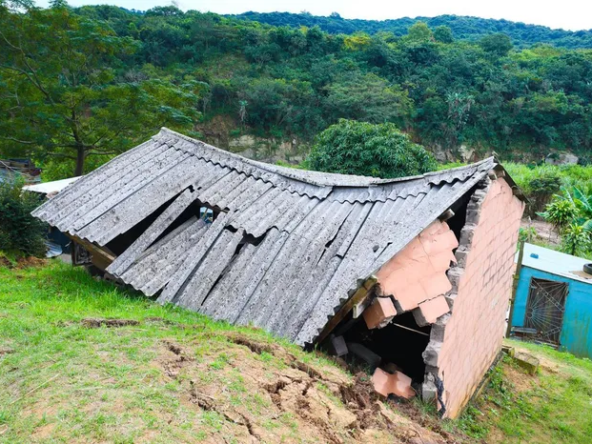While the South African real estate sector has not been insulated from the various macroeconomic challenges, the sector has shown notable resilience.
This was as this year got off to a volatile start with significant movements across global markets, shifting geopolitical dynamics, and ongoing volatility driven by persistent macroeconomic headwinds.
Despite global pressures, South Africa’s real estate market faces significant domestic headwinds. These include stubbornly high interest rates, the continuing impact of the post-Covid-19 recovery, and overall weak economic growth, according to Simon Fiford, senior vice president for Real Estate Coverage at Standard Bank.
These factors have impacted each asset class differently. Across these categories, performance has varied.
“According to Standard Bank’s internal estimates, the South African commercial real estate sector is currently valued at approximately R1.9 trillion. This represents a significant increase from the R1.3 trillion recorded in 2015, highlighting the sector’s growth over the past decade.
“If we add to this the estimated value of the residential property market (R6.9 trillion), the market size exceeds R8.8 trillion (as of the end of 2024),” Fiford said.
The African bank with assets at around R3.3 trillion as of the financial year of 2024 and has a footprint in 20 African markets, monitors and analyses real estate trends.
The senior VP said it is important to note that these valuations may not fully capture the entire market, as certain segments like government-owned properties, hospitals, hotels, and multi-dwelling residential units might be underrepresented in municipal data.
“This significant figure affirms the enduring relevance of physical real estate assets, even as digital and virtual platforms proliferate.”
The local real estate sector comprises multiple, highly differentiated asset classes: office, retail, residential, industrial and alternative real estate assets-including data centres, cold storage facilities, and student accommodation, among others.
The bank’s data office rentals have shown surprising resilience, with the national weighted decentralised vacancy rates for grades A+, A and B office space decreased to 12.6% in the last quarter of 2024, down from 14.4% in the last one of 2023.
The shift back to physical workplaces has gathered momentum, as hybrid fatigue sets in, and companies prioritise in-person collaboration.
The retail sector has experienced a remarkable recovery as footfall and occupancy rates have now surpassed pre-pandemic levels in several key African markets. The asset class was said to be also seeing low vacancy rates (5.5% FY 2024), as well as increased adoption of solar PV initiatives which are being used to manage operational costs.
Furthermore, the financier said they have witnessed the rise of urban consolidation which has led to innovative precinct developments, which blend residential, retail, and cultural spaces in one environment.
However, it said the structural undersupply of affordable housing in the country remains a challenge. According to the Centre for Affordable Housing Finance in Africa, the total value of South Africa’s residential property market reached R6.9 trillion in 2024, encompassing 6.91 million properties.
Residential assets represent 89.3% of total property volume, thereby underscoring their centrality to household wealth. Importantly, government-subsidised housing (GSH) makes up 32% of total residential units, or about 2.18 million homes.
This indicates massive potential for scalable investment and impact.
Encouragingly, the financial institution said the residential market is showing lower vacancy rates, increased investment in build-to-rent and build-to-sell developments, and a steady rise in rental yields.
The standout performer across the board was said to continue to be the industrial sector. This asset class benefits from booming e-commerce, the reshoring of supply chains, and demand for warehousing solutions.
Vacancy rates have dropped by 2.1%, while rental growth has exceeded 5% year-on-year.
“We are also seeing a surge in tenant-driven developments and sale-and-leaseback structures, enabling manufacturers to remain focused and unlock capital to invest in core operations.”
Data centres, cold storage, and student accommodation were said to continue to emerge as strategic sub-sectors. Their rise was linked to shifts in technology, food logistics, and urbanisation, pointing to new investment opportunities.
Fiford said that however, for many across the continent, physical infrastructure remains essential. “Whether it is visiting a favourite retail store, collaborating in an office, or living in secure housing, real estate continues to shape our daily lives.”
Sandile Mpanza, the head of commercial property finance Africa region at Absa CIB, said in 2023, a financing deal quietly redrew the boundaries of East Africa’s real estate playbook.
Acorn Holdings Limited secured KES 6.7 billion from Absa Group and Absa Bank Kenya to develop ten purpose-built student accommodation sites across Nairobi.
He said on paper, it was a domestic transaction.
“In substance, it marked three precedents: the first time a development Real Estate Investment Trust (REIT) had been bank-financed through a bilateral loan in Sub-Saharan Africa; the first sustainable finance facility for commercial property outside South Africa; and a decisive shift in where-and how-real estate value is now being constructed,” Mpanza said.





